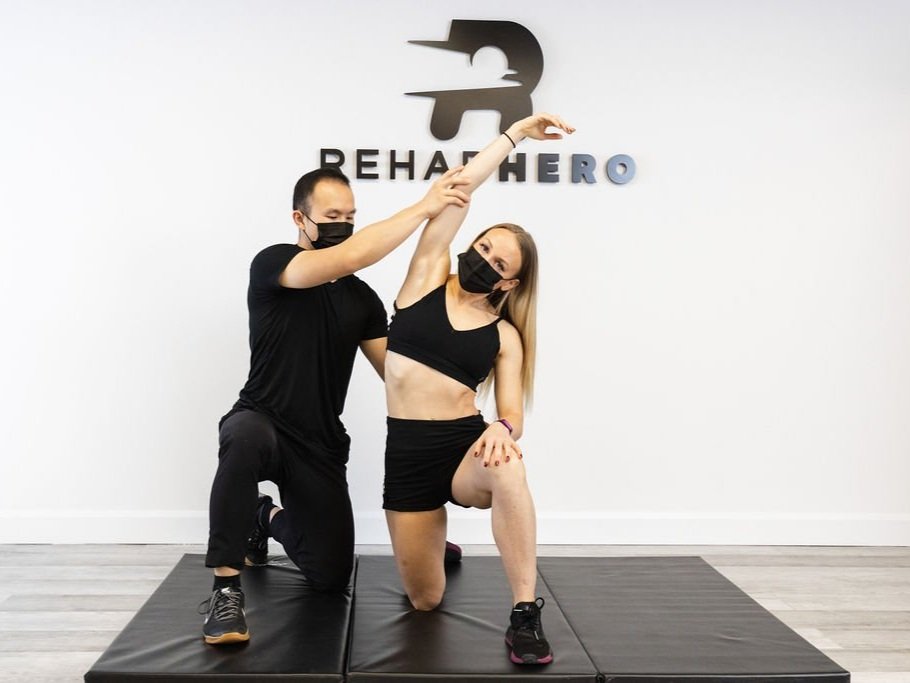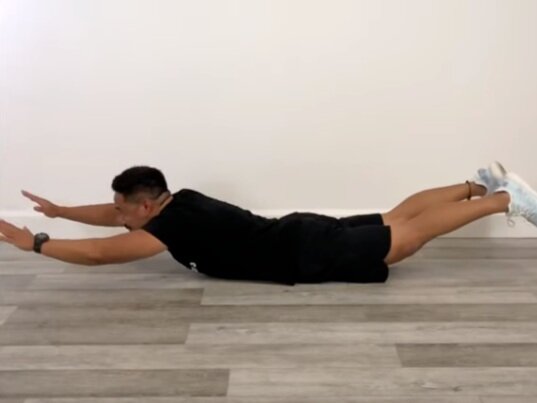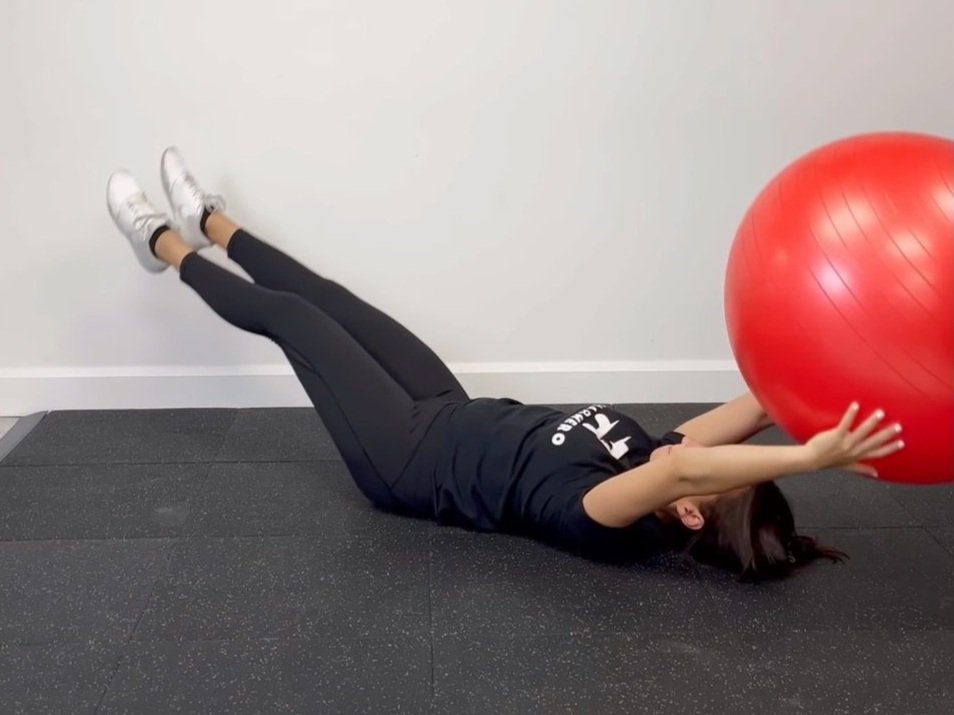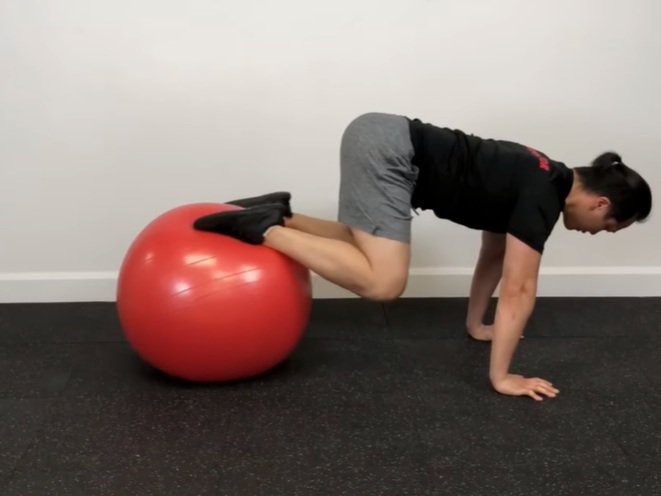Superficial Front Fascial Line
Superficial front line
Learn about how this fascial line is affecting your movement.
Why do we care about the superficial front fascial line?
We recently discussed the functional back line which is an important driver when it comes to active movements. But what about the complete opposite in static positions that most of us are guilty of spending 8 hours plus per day? Yes, sitting is what we’re referring to. Necessary in small doses but can be problematic for most in extended durations.
To recap, the functional lines become most active during movement and therefore least active during static activities. To contrast this, the superficial lines are active all the time as a means to hold our current posture. The superficial front line works in tandem with the superficial back line to keep us upright in the sagittal plane and prevents us from falling backwards or forwards through a constant counter-pull of one another. Therefore, the superficial front line is constantly in use, even during activities that may not seem physically demanding.
For example, during standing the superficial front line is responsible for maintaining proper alignment of the body while also absorbing the forces generated by gravity. Even during sitting, the superficial front line is responsible for stabilizing the pelvis and core in an eccentric manner.
So what happens when we’re sitting all the time?
First let’s explain the muscles that are in the superficial front line. The superficial front line (SFL) starts at the scalp fascia and descends into the sternocleidomastoid (SCM), along the sternum including the sternalis, into rectus abdominis, then the rectus femoris, crossing the knee via the subpatellar tendon, tibialis anterior, extensor hallucis longus, extensor digitorum longus and into the top (dorsal) of the foot.
Muscles of the superficial front line include the sternocleidomastoid, rectus abdominis, rectus femoris, tibialis anterior, extensor digitorum longus and the extensor hallucis longus muscles.
With these muscles noted, they all share a similar function, to create flexion in the sagittal plane of movement (the sagittal plane divides our body into left and right halves and movement through this plane follows the lines of forces from gravity). Our body tends to shorten, develop tightness and create adhesions along the myofasciae that crosses joints in the line of gravity. The superficial back line or back of the body tends to lengthen and weaken in compensation.
Specifically, dysfunction in the SFL will restrict backward movement or extension in the sagittal plane and favor forward movement or flexion. As a result, the tug of war between the superficial front line and superficial back line becomes unbalanced, equilibrium across the two sides becomes disrupted, and instability can result.
This case tends to apply more to the office worker that sits at a desk and is forcibly glued to their chair for more than 60% of their day. Not to mention if that individual is stressed and has a looming project deadline approaching, they may exhibit physical manifestations of that perceived stress such as hovering their head closer to the screen while concentrating, or shrugging their shoulders and curling forward in their chair from the mid back in anticipation of all the meetings they have to endure.
Athletes or physical hands-on workers that don’t spend as many hours per week sitting typically won’t develop the same magnitude of problems in the superficial front net in comparison. Since their day to day movement involves more physical work, they typically develop adhesions in their deep front nets from the need to generate force and power from their body when working with objects or performing tasks with their hands or legs in front of their body, which is a related but separate topic.
What does SFL dysfunction look like?
Commonly observed postural compensations pattern related to the SFL; ankle dorsiflexion hypomobility, anterior pelvic tilt, thoracic spine kyphosis, forward head posture and a breathing restriction in the anterior ribs. Tightness in the tibialis anterior can lead to reduced range of motion and or weakened dorsiflexion strength. Tightness in the rectus abdominis (particularly the upper section of the rectus abdominis underneath the sternum along bottom edge of the ribcage) can lead to hyper kyphosis of the thoracic spine that we commonly see in prolonged sitting posture. The upper rectus abdominis starts pulling the thoracic spine into flexion from the superior attachment and limits the thoracic paraspinals ability to extend. Over time the thoracic paraspinals fatigue from constantly being lengthened.
What happens long term if left unchanged?
While you might not get injured from leaving a dysfunctional SFL alone, issues may arise relating to your movement quality and function. When left sedentary for a long time muscles become de-conditioned and lose their ability to perform optimally. This may mean you lose range of motion, strength, endurance, and/or circulation. When this occurs, sensations of ‘muscle tightness’ may be more readily experienced when moving through otherwise normal ranges of motion. This occurs as the body has become de-conditioned and has lost its ability to move through this range with ease. The relative increase in difficulty in completing these movements may register with your brain as tension, tightness, or sometimes even pain.
An example would be the SCM, which can be over-facilitated and stiff. The SCM is responsible for cervical flexion and contralateral rotation. It’s role in flexion can be overutilized in forward head posture positions which may lead to headaches or neck pain.
Are changes in the superficial front line permanent?
Fortunately the length-tension relationship of the myofasciae between the SFL and SBL can be addressed with self-myofascial release (SMFR). The SFL in particular responds well to SMFR to restore normal functional mobility. Here is a simple self release procedure for pain relief associated with tightness in the SFL. Spend 30 seconds minimum per one spot and make sure to breathe!
Use a soft pincer grip to gently massage the SCM
Use a massage ball like a lacrosse ball for the smaller muscles. This refers to the sternal attachment of the pectoral muscles, upper abdominals right below the sternum, and tibialis anterior
Use a foam roller for the quadriceps since they are a large muscle group and because using more focal pressure to the quad sucks and hurts a lot more than broad pressure.
Try to relax into the lacrosse ball or foam roller and you will notice a decrease in sensation or pain which means you are on the right track for releasing the muscle. Aim for a 5/10 pressure or less when doing this, you don’t need to use a lot of pressure and go gung ho on your muscles. Your fight or flight response will respond to higher levels of pain which will send signals from your central nervous system to your muscles to contract and fight back the pressure from the massage ball or foam roller which is the opposite of what we are trying to do when performing SMFR.
Exercises to improve the superficial front line
No time? Only 1 stretch? Fascia is a whole line and assembly of muscles so you don’t necessarily have to individually target and isolate on a muscle to muscle basis. Something like doing supermans will actively stretch the superficial front line while engaging and activating the superficial back line. This is known as active stretching which is another method that can be used to approach stretching as opposed to the commonly seen traditional method of passive static stretching.
In the case of the superficial front line and the superficial back line, this is a perfect example of activating and stimulating the superficial back line, to counteract the SBL often being lengthened, while simultaneously lengthening the superficial front net which tends to be tight and short.
Treatment options for the superficial front line
Both fascial stretch therapy and myofascial release therapy are great options for releasing built up tension in the superficial front line.
Fascial stretch therapy or FST uses assistive stretching and peripheral neuromuscular facilitation to coach muscles to contract and relax in lengthened positions. This is done in order to create longer lasting results in muscles that are otherwise dysfunctional in stretched positions. By getting muscles to engage in stretched positions you can prime the nervous system to positively adapt leading to mobility and range of motion gains. FST requires certification by practitioners in order for it to be used on you.
Myofascial release therapy is a type of manual therapy provided by Rehab Hero massage therapists. This type of therapy involves the shearing of fascia in order to mobilize these soft tissues. By addressing both the muscles involved and the fascia that connects them, your body can be treated as a system rather than by parts.
To book in an appointment in Markham or Toronto with a Rehab Hero fascial stretch therapist or massage therapist use the button below.
Written by: Oscar Lau, RMT
Oscar Lau is a registered massage therapist in North York that focuses on sports injuries. With a background in personal training he helps his patients not just through manual therapy but also
























